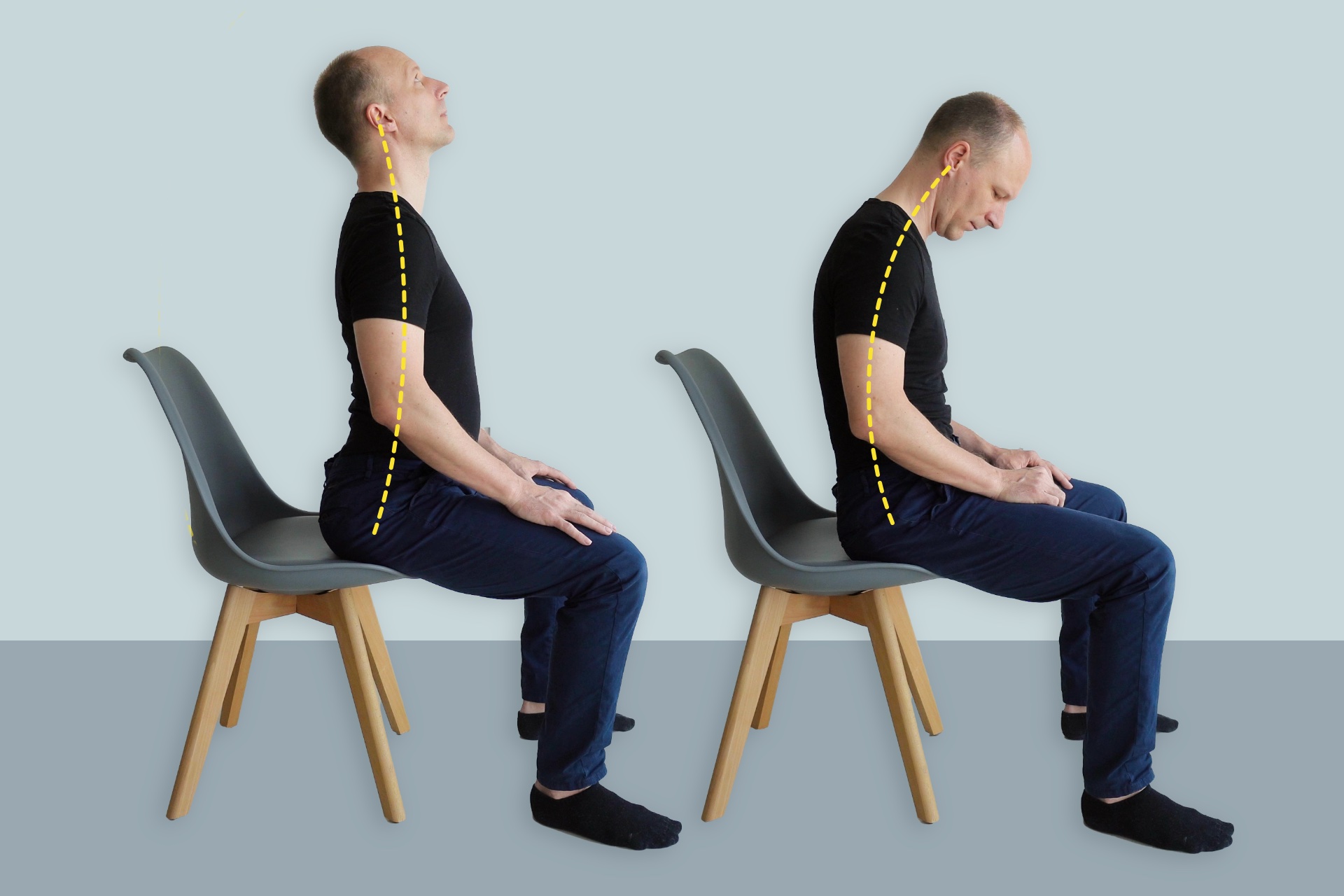Balanced upright sitting
Flexion and extension in sitting initiated from the pelvis. Using the hands to feel the distribution of movement.
In our highly visual world we often use our eyes to keep balance, and we keep our head stable in relation to the room around us, instead of moving the head in response to the movements of the pelvis and the rest of the body. In this lesson we bring about proportionally distributed movement throughout the entire spine, instead of focusing on and moving certain areas only (for example when trying to adjust the neck position). We become aware of how to employ the entire spine, including the pelvis, for changes in posture. This is not a means of „fixing” the upright sitting posture, but instead of becoming aware of what we do, and expanding on our possibilities; thus improving our skills.
sittingflexionextensionsitting balanced_sitting_1
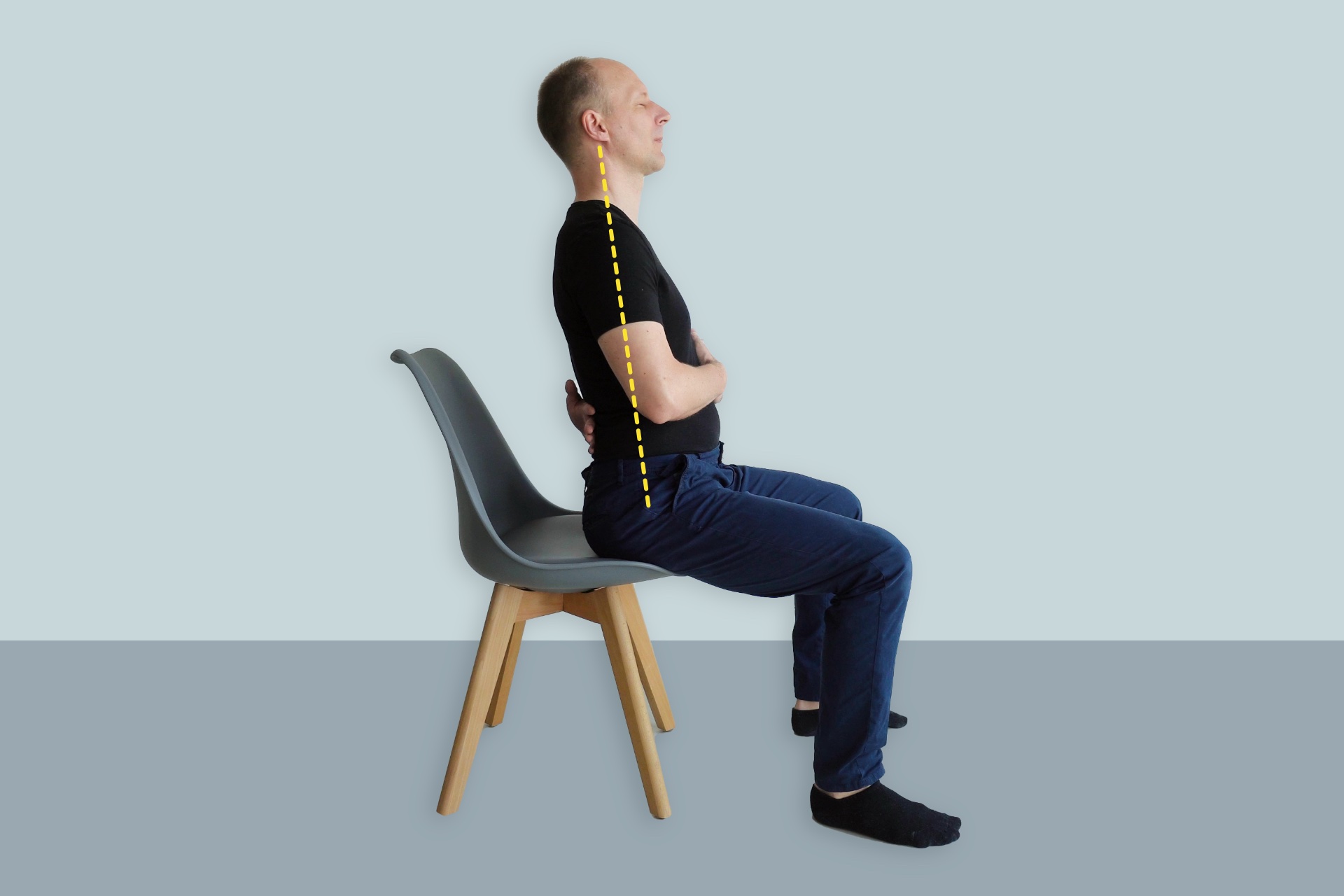
Sit on a stool or on the front edge of a chair. Place the palms of your hands on your torso to help feel the movements of your pelvis and torso. Eyes preferably closed.
Tilt torso forwards
Initiate the movement from your pelvis, legs, and hip joints. Prevent your spine from bending, arching, or twisting.
- If the chair has a backwards inclined and bowl shaped seating platform, then the front edge of the chair is the place most supportive of a neutral spine.
Sway your head and torso backwards stiffly, like a tall tree, only move from your pelvis, don't bend the spine.
Only sway back a little bit, stop before you fall backwards against the backrest.
Tilt torso forwards
Initiate the movement from your pelvis, legs, and hip joints. Prevent your spine from bending, arching, or twisting.
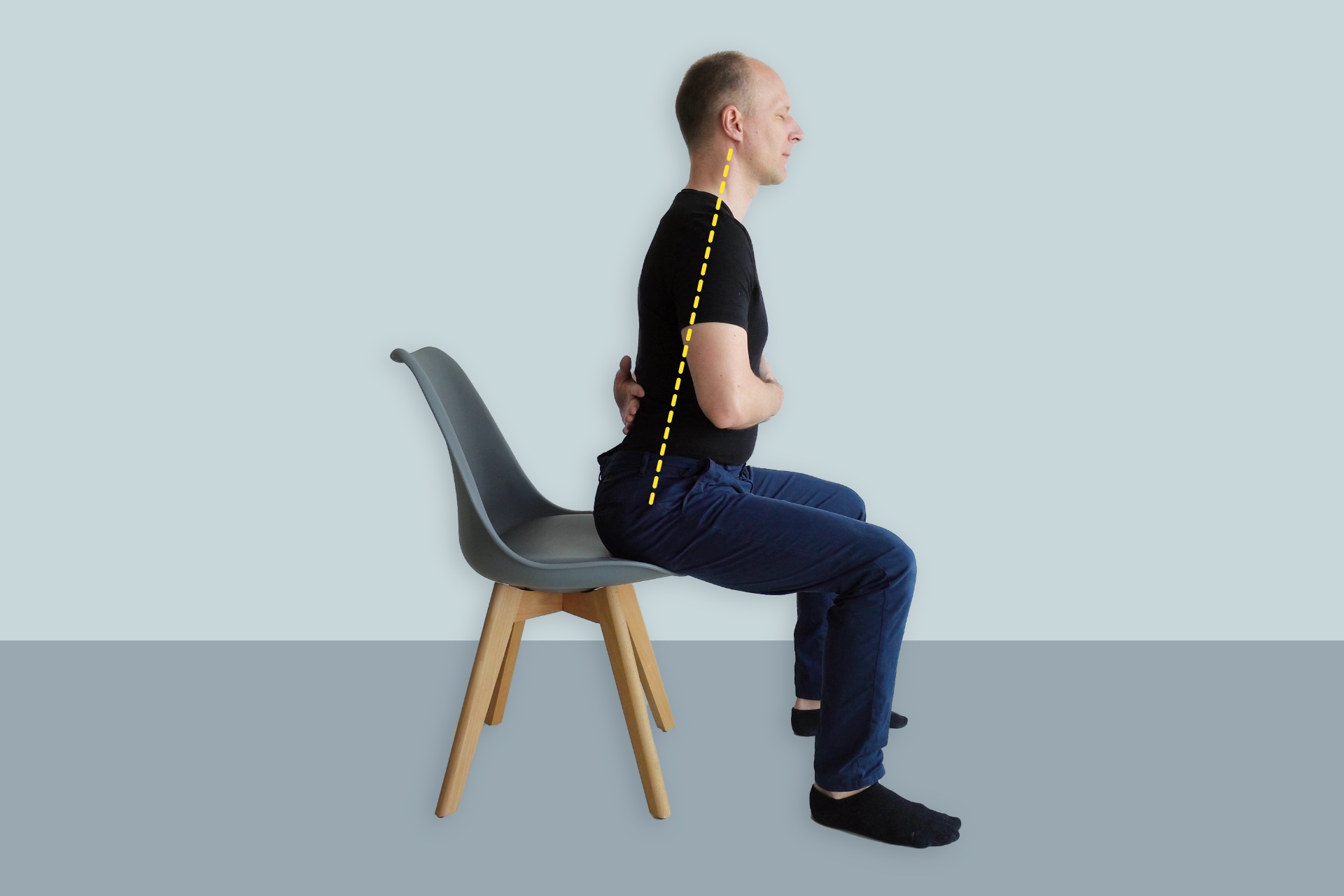
Sit like before
Tilt torso backwards
Initiate the movement from your pelvis, legs, and hip joints. Try to eliminate any motion of your spine.
- Sway your head and torso forwards stiffly, like a broom stick, only move from your pelvis, don't extend the spine.
Only sway forwards a little bit, stop long before you fall over forwards.
Tilt torso backwards
Initiate the movement from your pelvis, legs, and hip joints. Try to eliminate any motion of your spine.
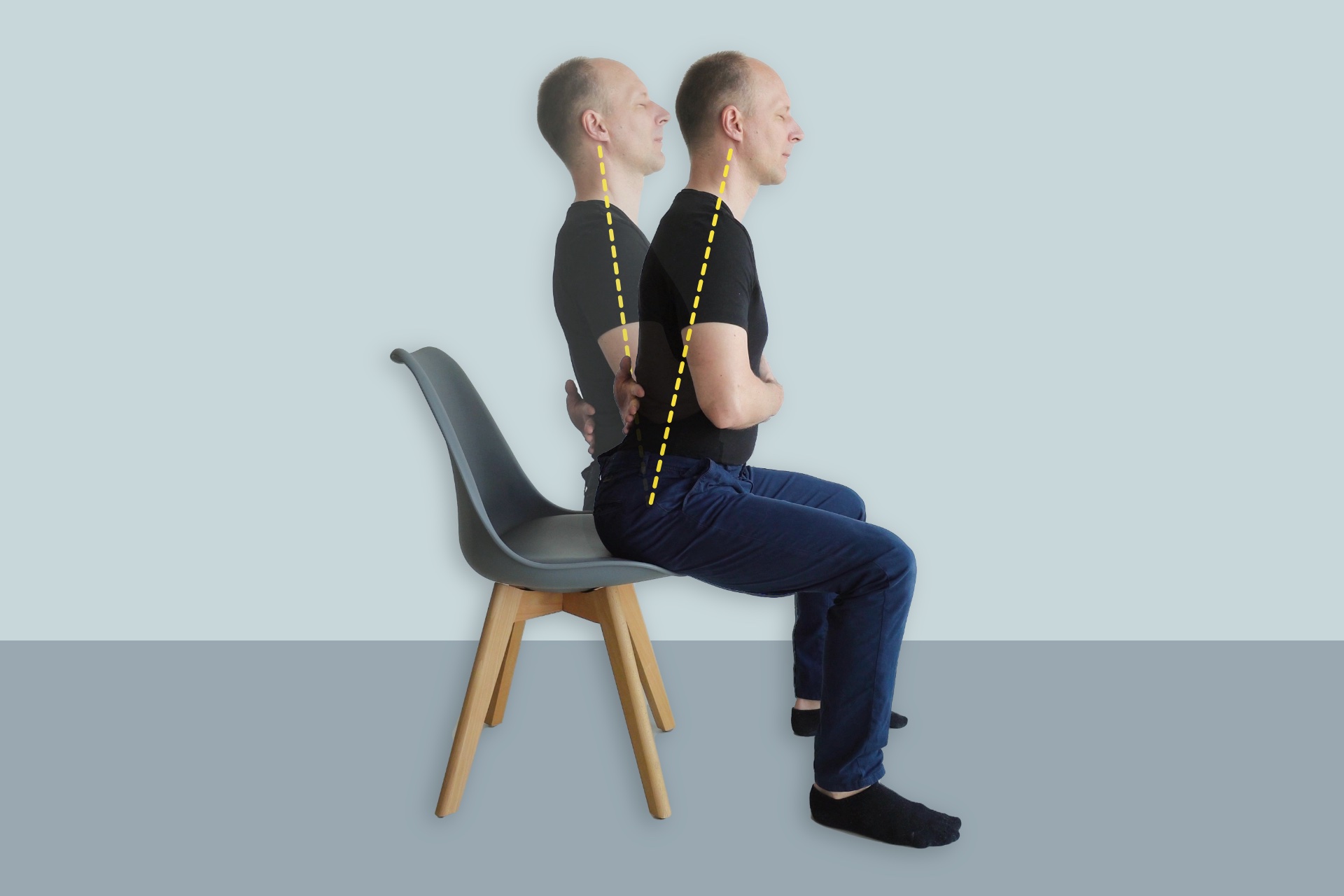
Sit like before
Tilt torso forwards, backwards
Combine the previous two movements, roll backwards only as much as forwards.
- Sway your head and torso forwards and backwards stiffly, like a big tree, only move from your pelvis, don't extend or round your spine.
Tilt torso forwards, backwards
Combine the previous two movements, roll backwards only as much as forwards.
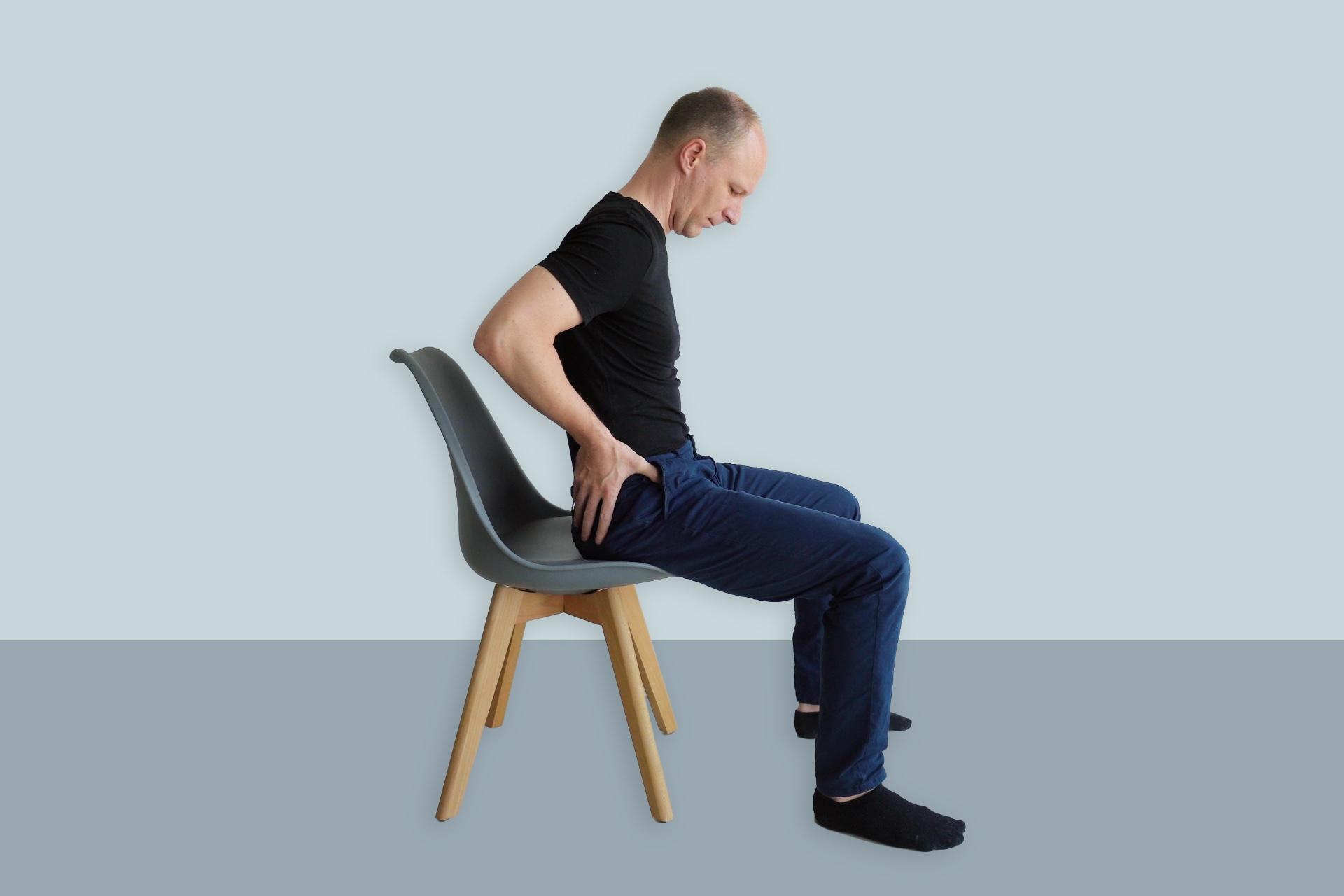
Sit like before
Roll pelvis backwards, round your spine
Help to sense your pelvis roll backwards with your hands. Keep your ears over your pelvis.
- Starting from sitting on the top of your sit-bones (ischial tuberosities), roll your pelvis towards your tail-bone (coccyx, a small triangular bone at the base of the spinal colum).
Lower your head as response to the rolling of your pelvis and bending of your spine.
Don't let your head move behind your pelvis, keep your head over your pelvis, while your round your back and shorten your front side.
Roll pelvis backwards, round your spine
Help to sense your pelvis roll backwards with your hands. Keep your ears over your pelvis.
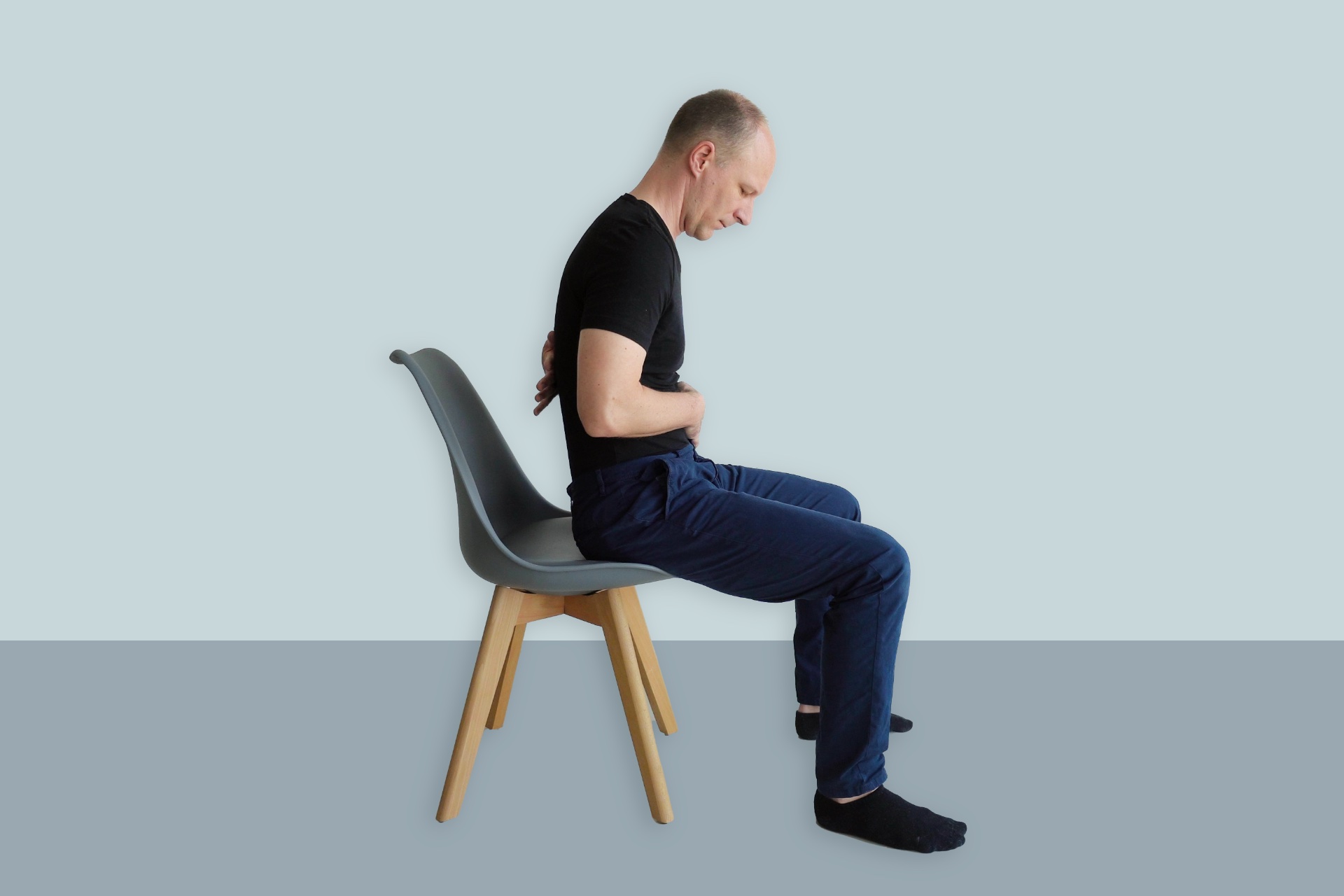
Sit like before
Continuation
…vary where spine is rounded the most
Every time you roll your pelvis backwards use a different area as the maximum point of curvature.
- Use your hands to feel where you bend the most in your spine.
Is it right above your pelvis? Or more in the middle of your back? Shift this point of maximum curvature with every time you roll your pelvis backwards.
Don't nod your head independently, but in response and to the same amount as you roll your pelvis.
Continuation
…vary where spine is rounded the most
Every time you roll your pelvis backwards use a different area as the maximum point of curvature.
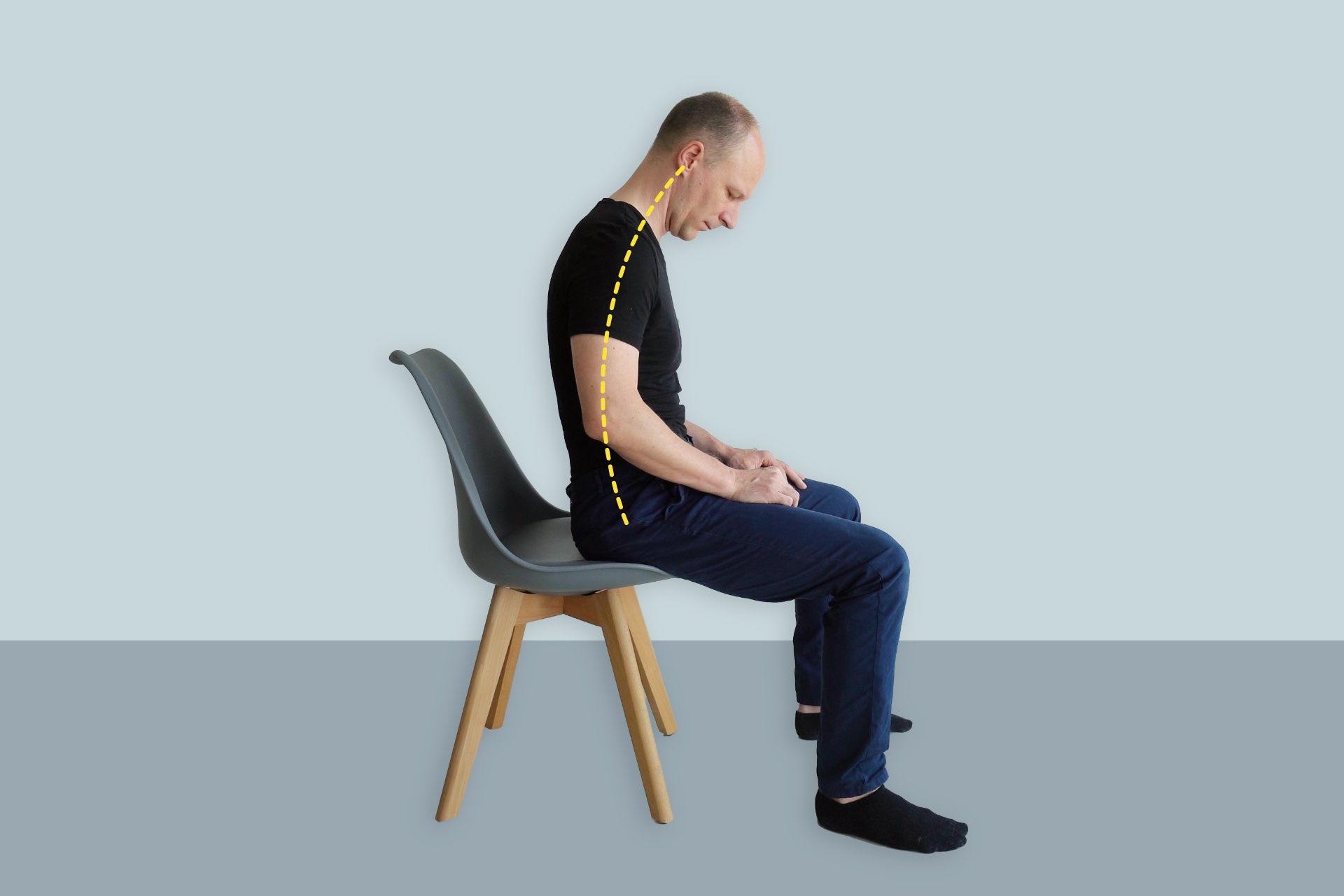
Sit like before
Reference movement
Roll pelvis backwards, move whole spine
The front of your chest shortens in response to the rolling of the pelvis, and comes back up easily.
- Move your head in response to the movements of your pelvis. The pelvis should lead the movement.
Ideally, two things are happening: you are listening closely, and you move in response to what you are hearing from within.
Reference movement
Roll pelvis backwards, move whole spine
The front of your chest shortens in response to the rolling of the pelvis, and comes back up easily.
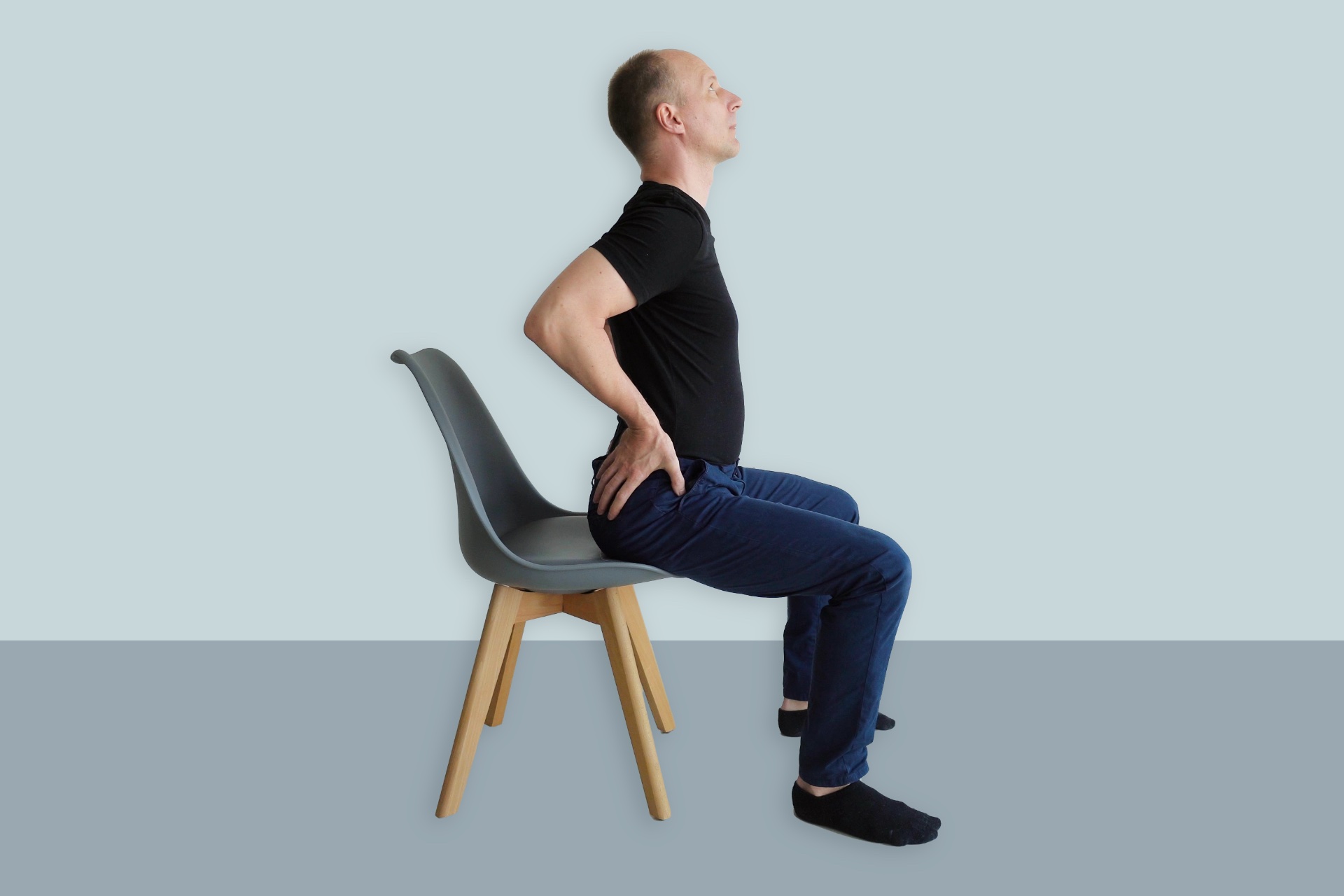
Sit like before
Roll pelvis forwards, extend your spine
Roll your pelvis towards your pubic bone, arch your back a bit, lift your sternum, lift your nose.
- You are rolling into an extension.
Again, lead with your pelvis, let everything else follow accordingly, proportionally.
Don't overextend your neck – lift your head only as much as you roll your pelvis forwards.
Roll pelvis forwards, extend your spine
Roll your pelvis towards your pubic bone, arch your back a bit, lift your sternum, lift your nose.
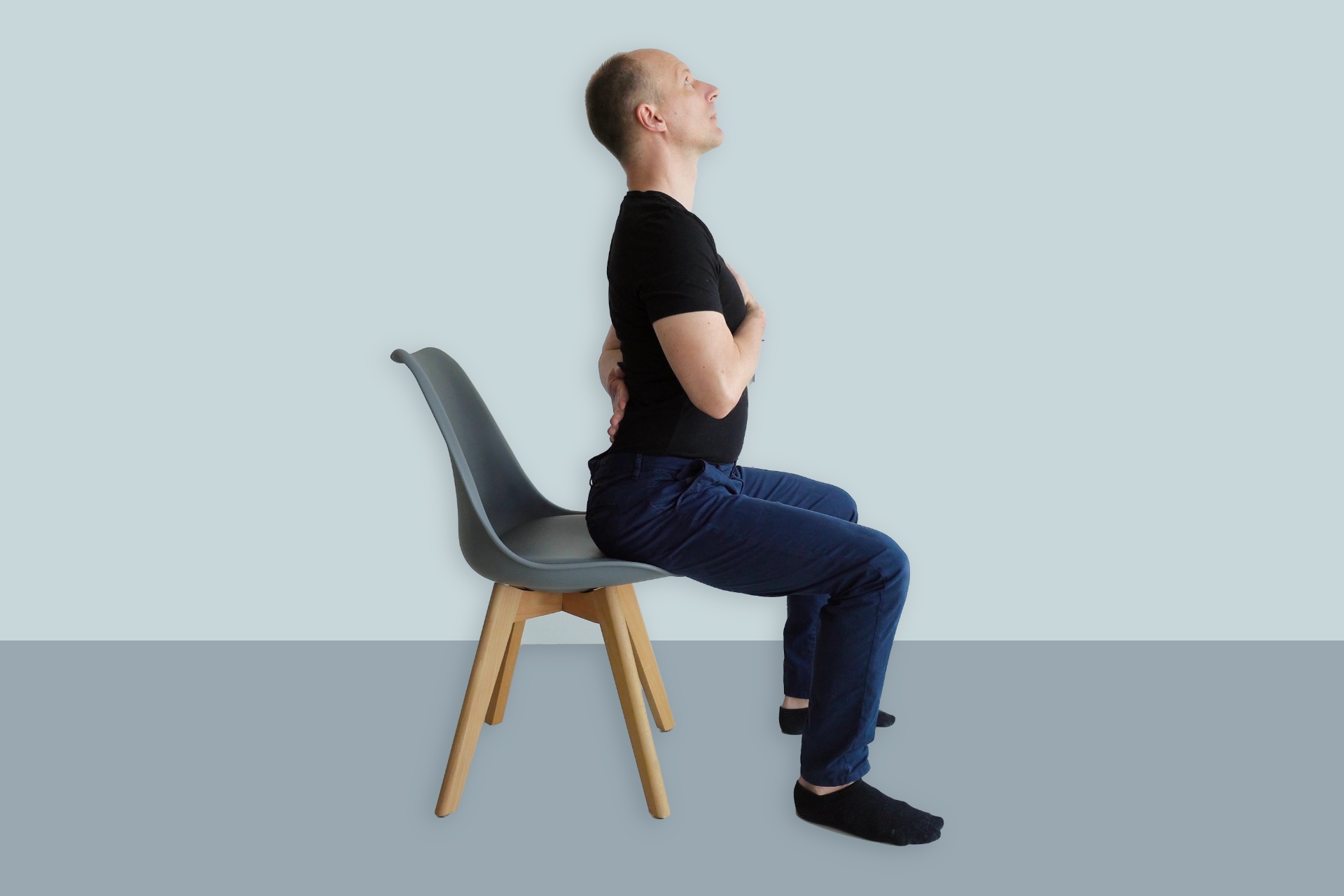
Sit like before
Continuation
…vary where spine is arched the most
Every time you roll your pelvis forwards use a different area as the maximum point of curvature.
- Use your hands to feel where you bend the most in your spine.
Does your pelvis tilt almost independently, leaving the rest of the spine behind? Or is the center of your extension further above, at the area of tip of your sternum, your xiphoid process?
Continuation
…vary where spine is arched the most
Every time you roll your pelvis forwards use a different area as the maximum point of curvature.
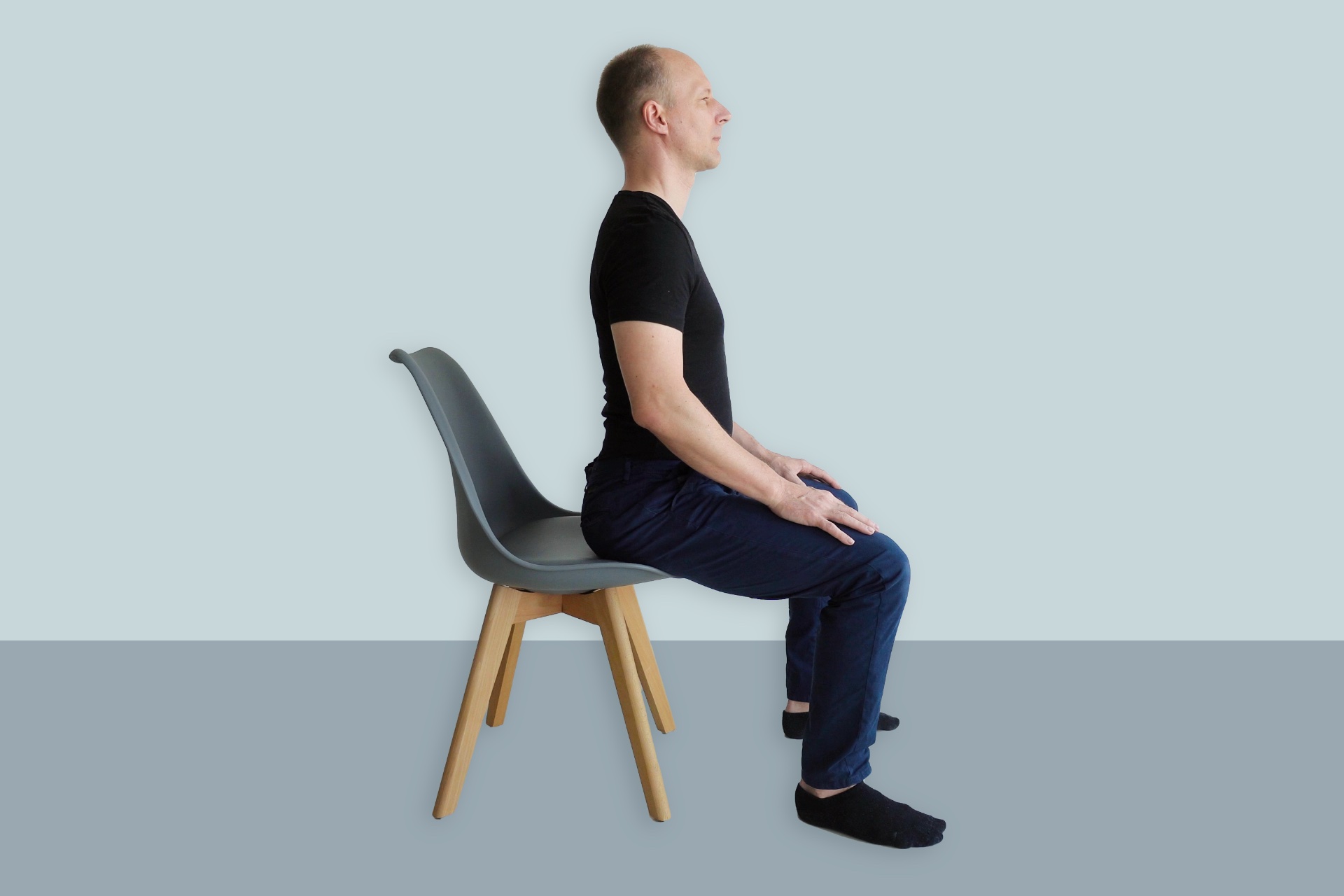
Sit like before
Roll, stop at center
Continue to roll your pelvis, but stop when your eyes are at the horizon.
- Find the alignment where your head is level so that your eyes are on the horizon.
In this position your entire spine supports the position of your head.
Roll, stop at center
Continue to roll your pelvis, but stop when your eyes are at the horizon.
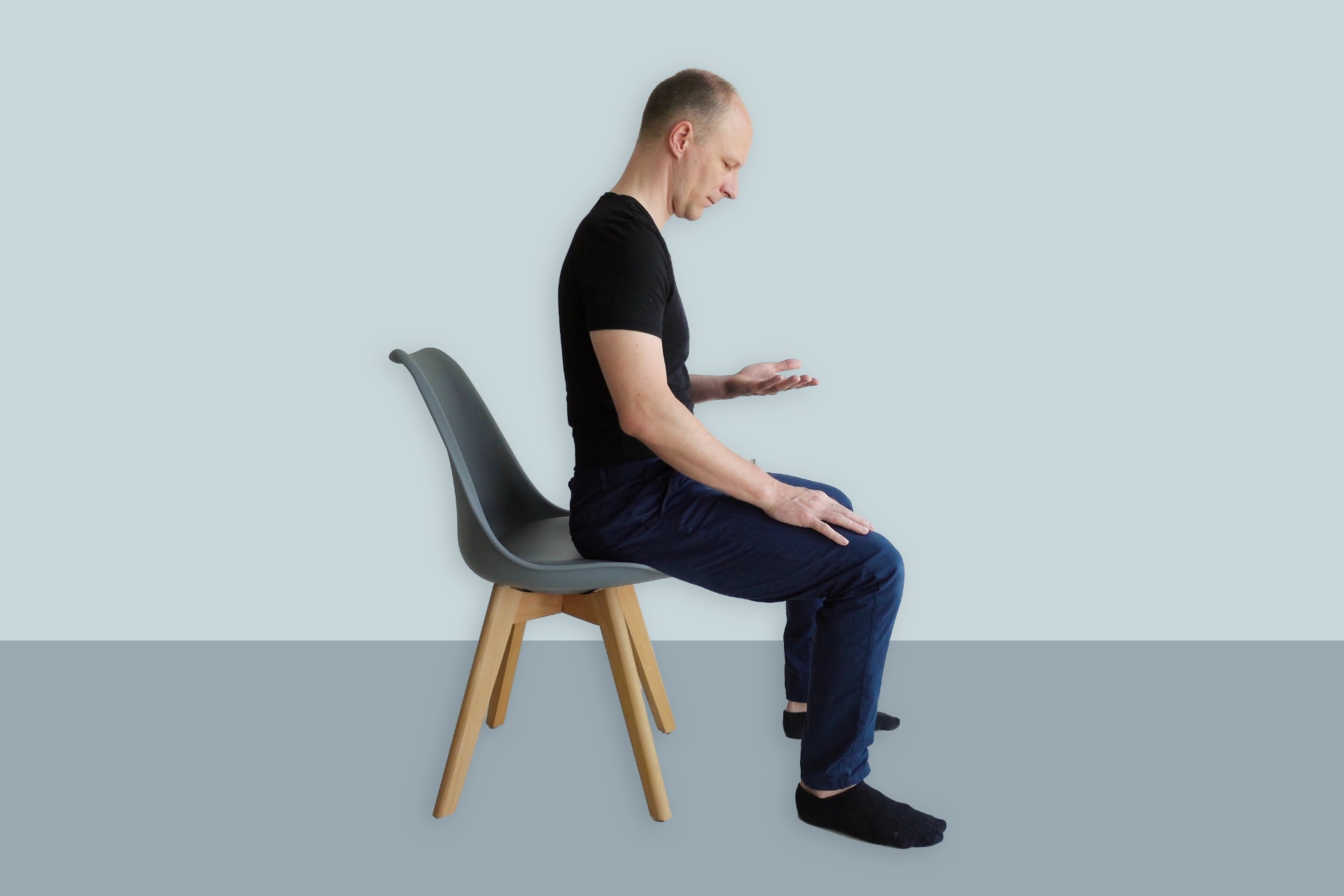
Sit like before
Roll, stop when eyes point downwards
In this way it's not just your neck, but your whole self that is involved in looking downwards, for example at your phone or ebook.
Roll, stop when eyes point downwards
In this way it's not just your neck, but your whole self that is involved in looking downwards, for example at your phone or ebook.
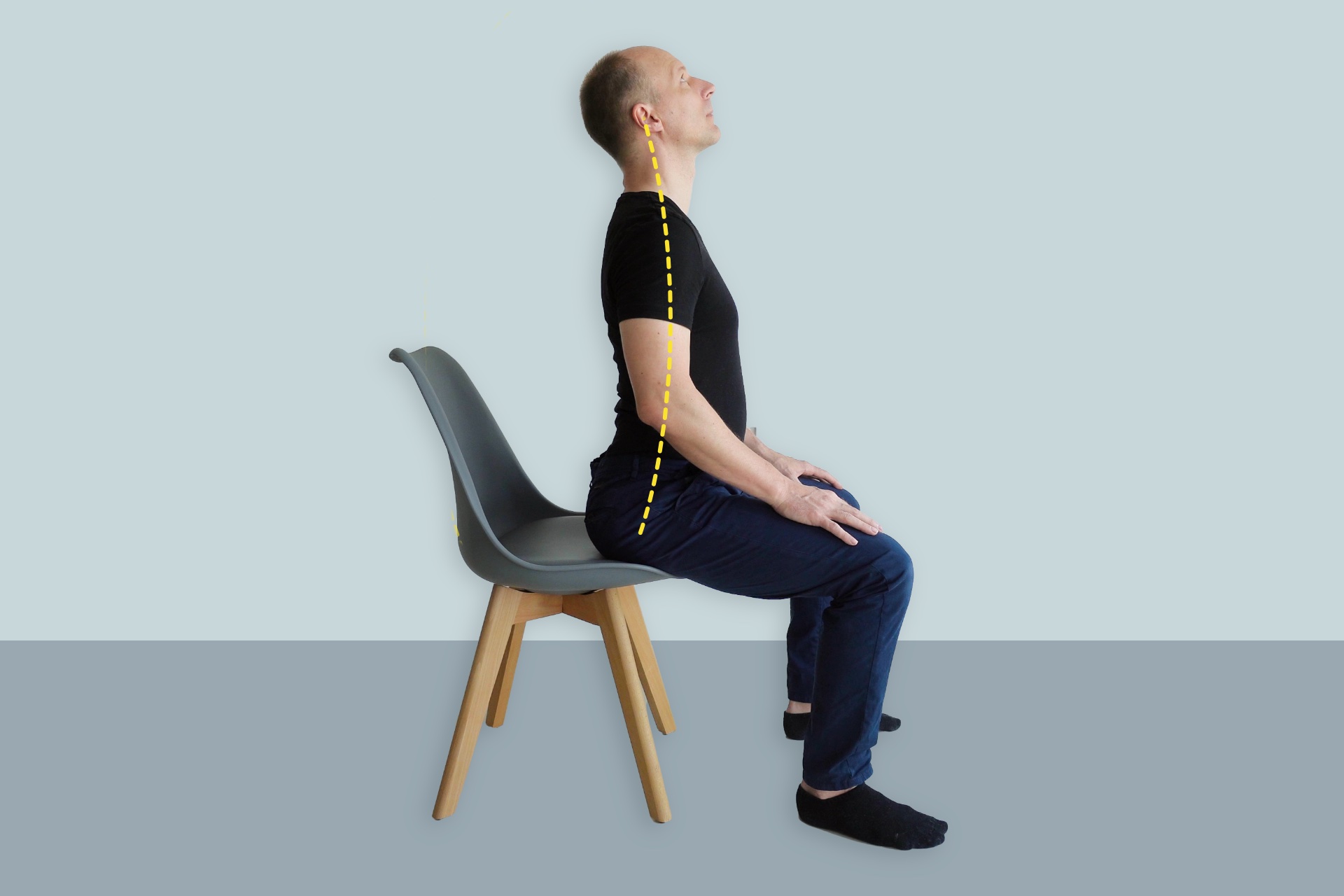
Sit like before
Roll, stop when eyes point upwards
In this way it's not just your neck and middle of the back, but your whole self that is involved in looking upwards.
Roll, stop when eyes point upwards
In this way it's not just your neck and middle of the back, but your whole self that is involved in looking upwards.

